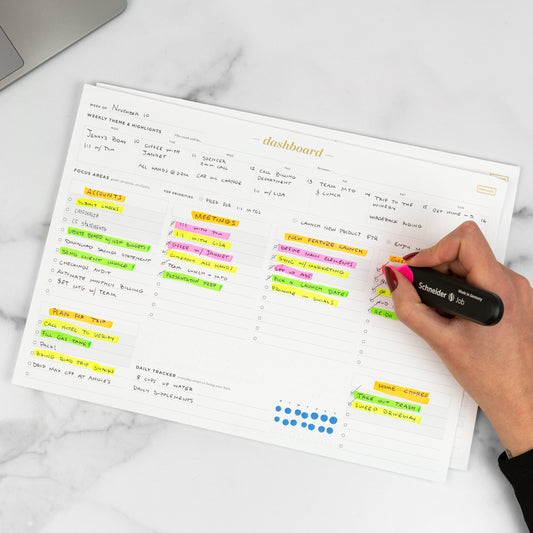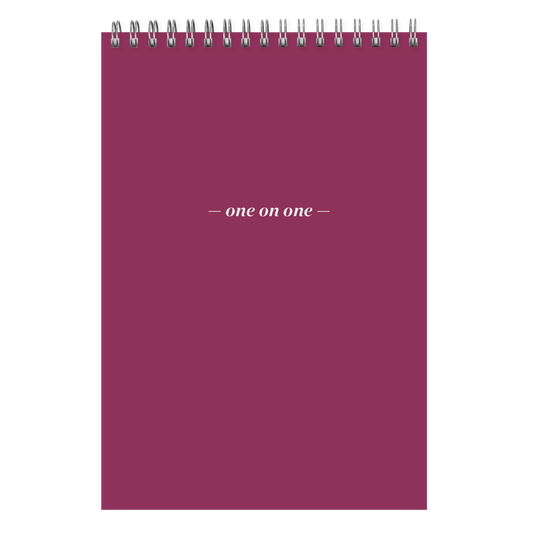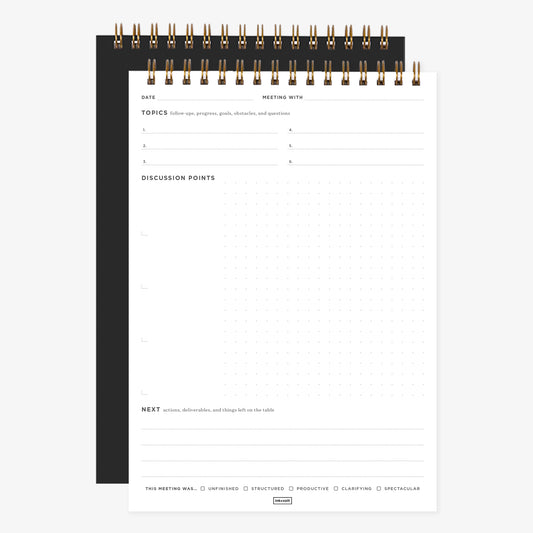Are you new to the fountain pen world? Looking to learn more about this special writing tool and the beautiful ink options out there?
You’re not alone. As you may have noticed, fountain pens have become increasingly popular in recent years. And it’s no surprise because fountain pens and ink are:
- Fun to write with
- Available in a wide variety of price points, colors, and options (both the pens and the ink)
- Excellent for more expressive writing (different thicknesses, unique colors, flourishes, etc.), compared to other types of pens and even digital products
But unlike ballpoint or rollerball pens, fountain pens and fountain pen ink require some extra care and skill…it’s worth it though, trust us! (psst…we carry a great selection of fountain pens for novice and more experienced fountain pen owners alike).
So, essential to your knowledge base of fountain pens is fountain pen ink.
What kind of fountain pen ink should you buy, does paper affect how the pen writes, how do you add ink or replace a cartridge, and what can you do to maintain your fountain pen and ink so it lasts for many years to come? You’ve got questions, we’ve got answers.
Fountain pen ink basics
The type of fountain pen ink you use in your fountain pen strongly depends on the type and the brand of fountain pen you own, which we’ll discuss more below. But first, some basics:
- Fountain pen ink flows from the ink reservoir through to the nib, which touches the paper; nibs come in various shapes and sizes, e.g. fine, medium, and broad nib tips. The nib size will affect how your writing looks and how the ink appears on paper.
- For an excellent, detailed explanation of fountain pen anatomy including where the ink goes, The Goulet Pen Co. breaks it down nicely with visuals, showing various components like the cap, nib, feed, clip, and body.
- Fountain pen ink is contained within the fountain pen by a reservoir and is refilled using different systems or actions to fill them (also known as the filling systems).
- Fountain pen ink is sold in a cartridge or in bottled form. Both have pros and cons that may be more appropriate for you depending on your skill and comfort level with fountain pens and the type of pen you own.
So before you select a fountain pen ink color just because you love that shade, make sure it’s compatible with and will be able to go into your pen.
Filling your fountain pen
How you fill your pen depends on the type of pen you have. Here are some examples of fountain pen types and corresponding ink filling options:
- Fountain pen with a cartridge → fill with a cartridge or a cartridge converter
- Fountain pen with a cartridge converter → fill using a piston converter or a squeeze converter
- Fountain pen with a built in filling system → fill using the built-in piston or the built-in vacuum.
Cartridges
Cartridges can only be used in a pen that has a cartridge filling system, not one with a built-in filling system. They are hands down the easiest fountain pen ink to install and replace. It is basically a small plastic reservoir that holds the ink within the pen and is disposable, like the cartridges you buy and install in your home printer.
However, pens with a cartridge design typically must use cartridges from that brand and are often proprietary. This means your color options are limited to what your brand of pen offers.
One way around this dilemma is to choose a pen that has a standard cartridge design, e.g. a standard international cartridge. This will give you more colors to choose from (because you’re not limited to the color cartridges sold solely by your pen’s brand), though you still won’t have as many options as bottled ink.
Cartridges also don’t last as long as bottled ink, so even if it looks like you’ll save money short term, it may not give you as much ink in the long run and will need to be replaced more frequently.
Cartridge converters
Cartridge converters convert a cartridge pen into a pen that can be filled with bottled ink. In other words, the cartridge converter changes how your pen is filled with ink. After putting the converter into you pen as you would a normal cartridge, you use either do a twist (piston) action or a squeeze action to draw the ink from a bottle that the nib is placed in, up into the pen’s reservoir. This gives you many more ink color options! The Goulet Pen Co. has almost 700 ink samples to choose from!
Built-in filling system
Pens with built-in filling systems use similar piston or vacuum actions to draw the ink from a bottle into the pen. If you want to have the most straightforward system for using a wide variety of different colored fountain pen inks, then this is the one for you.
JetPens and wikiHow describe how this system works with pictures and additional details.
Types of ink
Now that you’ve got the fountain pen ink filling system basics down, you can start thinking about shopping for the ink! There are numerous options out there, all depending on your writing needs.
- Your basic, everyday ink. If you’re looking for an everyday ink, nothing fancy, black and blue are your go-to. Consider brands like Waterman, Lamy, or Noodler’s bottled or cartridge ink.
- Archival inks are fade resistant. Try Noodler’s, Rohrer & Klingner, or De Atramentis.
- Bulletproof inks is a term coined by the company Noodler’s that is fraud resistant, capable of withstanding water, UV rays, oven cleaners, and bleach.
- Fluorescent inks. For really unique ink you can only see under UV light, fluorescent ink is fun to use for secret messages.
- Highlighter inks are meant to be used over and on top of other written or printed ink, or on its own as if you were writing with a highlighter to more brightly contrast your words. Try Pelikan or Noodler’s brands.
- Shimmer inks are infused with glitter and sparkle to give your writing a twist. Use a broad nib and make sure to clean your pen after each use to avoid shimmery buildup! Brands like Diamine and J. Herbin have beautiful color options.
- Sheen inks take on a different color when the ink pools and it’s held at different angles or in different light, giving them a silvery hue. To get enough ink on your paper to pool, use a pen with a broad nib and ink-resistant paper (this is a must!). Brands like J. Herbin and Pilot Iroshizuku Yama-budo Ink are lovely, but note that sheen ink can clog your pen and takes longer to dry on the page.
- Shading inks appear lighter or darker at different points in your stroke, so the color takes on different grades of intensity. Paper again is very important (ink-resistant paper please)! It’s a fun option to try the more advanced you get in using your fountain pens.
- Scented inks come in scents like chocolate, rose, lavender, green apple, and jasmine. Though the scents smell the strongest as you’re writing and using the ink, it does last 1-2 days. Deliver your note to the special someone quickly!
The importance of paper
Your pen, the nib, the filling system, and the ink you choose are all important (and fun) pieces to the fountain pen writing puzzle. But the paper is what actually allows your ink and your writing to really shine and take center stage. As mentioned above, for some inks you’ll need very ink resistant paper, like Tomoe River paper, to avoid bleeding.
Generally though, a crisp white high quality paper will avoid some of the common problems when writing with a fountain pen, such as:
- Feathering, when the ink spreads into the paper fibers, often on cheaper papers
- Bleeding, when the ink soaks through to the back of the page
- Coated paper, which is super smooth and slippery compared to uncoated paper that is rougher (half-coated is best).
Tomoe River paper, R by Rhodia Premium Notepads, and Maruman Mnemosyne come highly recommended.
You can make your writing more unique and personalized with these fountain pen ink ideas! What pen and ink will you choose next?









